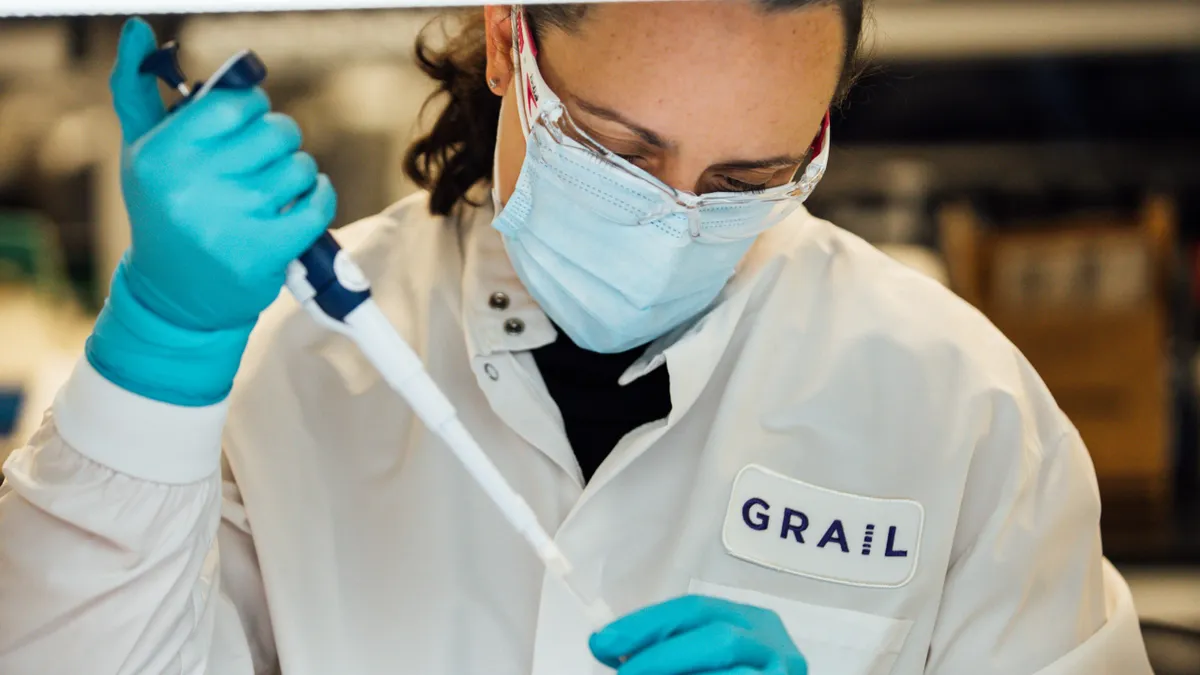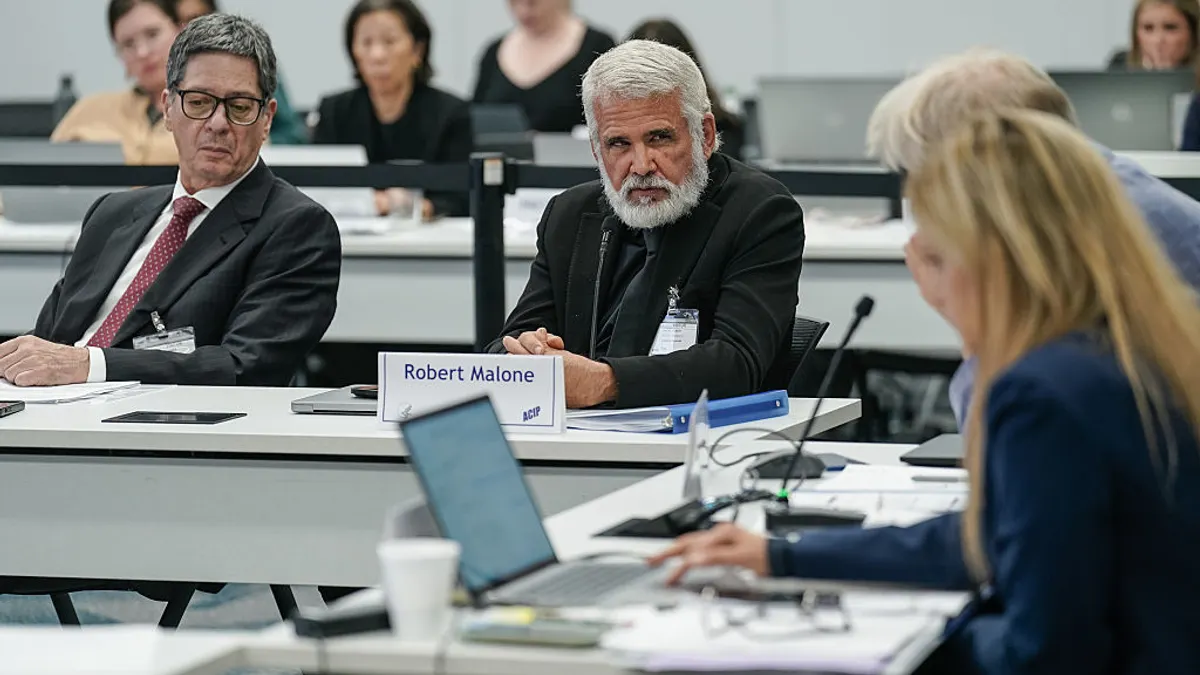When the deadline to appeal the court decision that blocked the Food and Drug Administration’s final rule regulating laboratory developed tests as medical devices slipped by in May without a word from the agency, industry groups were relieved that the plan they sued to stop was dead.
The U.S. District Court for the Eastern District of Texas found the FDA’s attempt to expand jurisdiction over LDTs exceeded its statutory authority. Yet regulatory experts think the agency may still see room to assert authority over LDTs in other ways. A recent warning letter to a diagnostics company points to one avenue the agency could take, attorneys said.
“There's some uncertainty there about exactly what direction the administration and FDA, in its independent capacity, would want to pursue,” said Steven Gonzalez, an attorney with Hyman, Phelps & McNamara.
The Trump administration, in choosing to let the decision stand, did not release a statement clarifying its position. A Health and Human Services spokesperson, responding to a MedTech Dive inquiry, said the agency does not comment on litigation.
Extending the FDA’s jurisdiction over tests offered as LDTs would have been a major new regulatory effort at a time when the administration is cutting back resources for the FDA.
“It's certainly not hard to surmise that part of the story here was that this current FDA, the current administration, just wanted to go in a different direction than the FDA final rule,” said Scott Danzis, partner at the Covington law firm. “I also do believe that the decision that was issued was clear and strong and would have been difficult to overcome in an appeal.”
Congress intentionally created a separate regulatory framework for facilities that perform test services, under the Clinical Laboratories Improvement Amendments of 1988, the court said in its ruling. CLIA is administered primarily by the Centers for Medicare and Medicaid Services.
The Food, Drug, and Cosmetic Act of 1938, or FDCA, authorizes the FDA to regulate manufactured products, U.S. District Court Judge Sean Jordan wrote in his opinion, adding that the “FDA has no authority to alter or expand the FDCA’s definition of device.”
An indirect approach
Gonzalez said there are alternate routes to regulate LDTs that the FDA could take, where the agency has either brought enforcement action sporadically in the past or suggested it might do so. One such avenue could be through regulation of device components.
The FDA’s warning letter to a German diagnostics company offers an example of how the agency could pursue a less direct path to regulate laboratory developed tests now that the court has quashed its attempt to broaden oversight, attorneys said.
The letter to DRG Instruments raised eyebrows among legal observers because it focused on evidence of unapproved device violations for an assay that was labeled for research use only, or RUO, but appeared to be intended for clinical diagnostic use instead. The March 31 letter, which the FDA posted on its website in late May, said DRG shipped the products to multiple companies that only perform clinical analysis.
In his opinion, Jordan noted that the FDCA’s definition of device includes instruments, machines, in vitro reagents, parts, accessories and other items used in the diagnosis, prevention or treatment of disease.
“This is definitely not the end of our discussion of LDTs and how they'll fit into the FDA regulatory framework, and we've got a lot of questions as we wait to see how the dust settles.”

Steven Gonzalez
Hyman, Phelps & McNamara attorney
The timing of the DRG warning letter, and the FDA inspection that led to it, occurred before the district court’s LDT decision and therefore does not appear to be a direct response to the order, said Gonzalez.
A year earlier, the agency issued a warning letter to another firm, Agena Bioscience, for a similar situation, he noted. The FDA has issued few warning letters about RUO diagnostics. Taken together, the two warning letters “are notable because of the lack of previous RUO letters,” Gonzalez said.
Danzis said that although the FDA lacks jurisdiction over test services, as the district court ruled, the agency could still use its authority over the instruments and other physical objects used by laboratories that are regulated as devices.
The DRG letter, he said, is “conceivably one example of that.”
Waiting for the dust to settle
The FDA is concerned with the commercialization of a product that is supposed to be for research use only, said Allyson Mullen, a director at Hyman, Phelps & McNamara. And even with staffing changes at the agency under the new administration, management of the division that reviews in vitro diagnostics has stayed the same.
“The folks who are working on this issue specifically are ones that have been in that role for a very long time,” Mullen said.
Beyond the issue of RUO diagnostics, the FDA could also look to more clearly define what constitutes a laboratory developed test, Gonzalez said.
LDTs are defined as in-house diagnostic tests developed, validated and performed by trained professionals within a single clinical laboratory. “But there's some room in that definition for uncertainty and questions,” he said, such as, “What exactly does it mean to be a single clinical laboratory?”
Some large corporations, for example, have multiple lab locations that might perform the same or similar test protocols developed by one or more of the labs under that corporate umbrella. “Another ambiguity is, What does it mean to develop a test in a single location?” said Gonzalez.
How the FDA will approach the regulation of companion diagnostic tests and software used with LDTs are other lingering questions.
“This is definitely not the end of our discussion of LDTs and how they'll fit into the FDA regulatory framework,” said Gonzalez, “and we've got a lot of questions as we wait to see how the dust settles.”
The Association for Molecular Pathology, one of the industry groups that brought the lawsuit against the FDA over the direction of LDT regulation, said in an email that it favors a tiered, risk-based structure that avoids duplication of activities within federal agencies.
AMP proposes updating the CLIA regulations through Congress rather than increasing FDA authority.
“AMP has long advocated that the best way to ensure the accuracy, reliability and appropriate use of LDTs is through the clarification of the long-standing CLIA regulations,” a spokesperson wrote. “Our proposal offers an alternative legislative pathway that will expand CLIA to ensure high quality testing is maintained.”





















